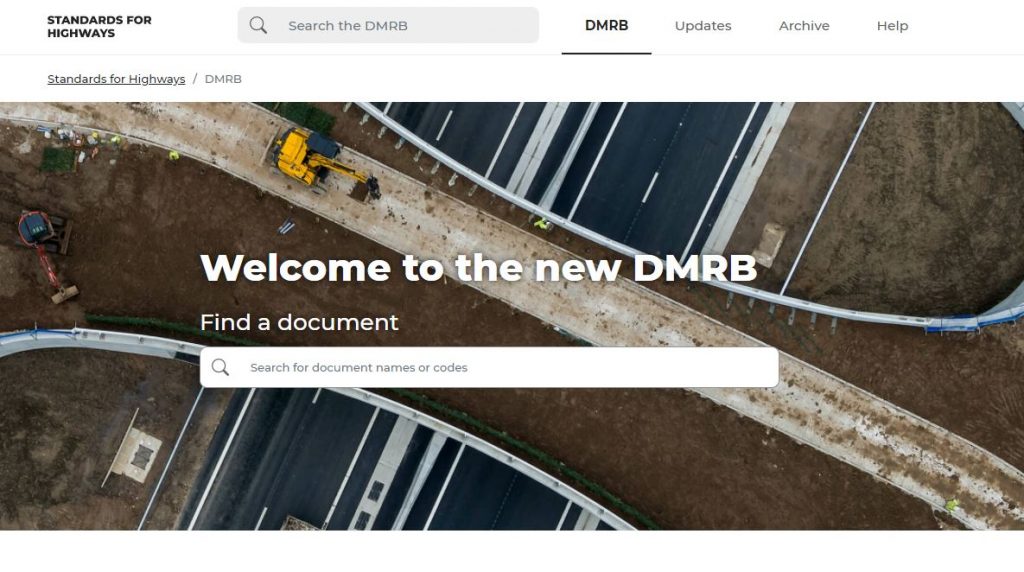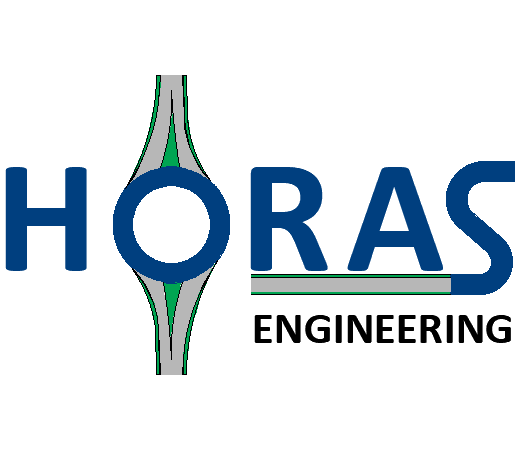
What is the Design Manual for Roads and Bridges (DMRB)?
The DMRB is a suite of documents which contains requirements and advice relating to works on motorway and all-purpose trunk roads. The requirements and advice given in the DMRB are provided on the basis that the works are constructed in accordance with the Manual of Contract Documents for Highway Works (MCHW).
The DMRB requirements shall be applied to the appraisal, design, maintenance, operation and disposal of the roads where they are applicable. When DMRB requirements are applied to other type of roads, the specific highway or local road authority should decide on the extent to which the requirements are appropriate in any given situation.
What happens when the requirements cannot be applied?
On some occasions, due to the constraints of our scheme, the DMRB parameters cannot be applied and therefore the designer has to prepare a departure application to be issued to the highways authority. This should be done before the design is finalised and prior to the incorporation into the works.
Departures may be applied for in a variety of situations, including:
- Where it can be justified that a requirement is inappropriate in a particular situation.
- Where the application of a requirement would have unintended adverse consequences.
- Where innovative methods or materials are to be proposed.
- Where an aspect not covered by requirements is identified.
Departure applications are approved on a location-specific basis and relate to the circumstances identified in each submission.
A good way to justify the departure from standard is to quote a previous approved departure.
In addition to the departure from standard, DMRB also allows for some requirements to be relaxed, what is considered a relaxation from standards. This relaxation will not require the submission of an application, but the highways authority shall be notified in these situations:
- Where a submission of a departure has the potential to be affected by the relaxation.
- Where there is the potential of cumulative effect of multiple relaxations and/or interaction between relaxations and nearby departures.
- Where the highways authority specifically requires it.
How are the DMRB standards divided?
DMRB standards were reviewed in 2019 to combine various old standards into one single document and facilitate the design and review process. In addition to the review, a new coding system has been created comprising of five digits, the first two based on the location of the document within the standards structure and the last three digits are a number allocated by the policy group to identify the specific standard.
The first digit can be:
- “G” – General Principles and Scheme Governance
- “L” – Sustainability and Environment
- “C” – Civil Engineering (comprising road layout, pavement, drainage, geotechnics and structures and bridges).
- “T” – Technology (comprising control and communications technology and road lighting)
The second digit refers to the phase of a project:
- “G” – General Information
- “A” – Appraisal
- “D” – Design
- “C” – Construction
- “M” – Maintenance and Operation
- “S” – Inspection and Assessment
- “Z” – Disposal
What are the main standards needed for highways design?
At the time of writing this article (i.e. November 2020), there are a total of 165 documents within the DMRB (https://www.standardsforhighways.co.uk/dmrb/). A list of the main DMRB standards from our point of view is the following:
- CD 109 – Highway Link Design – It includes selection of design speed, horizontal and vertical alignments, sight distance and design of wide single lanes 2+1, climbing lanes and overtaking sections.
- CD 116 – Geometric design of roundabouts – It includes roundabout types selection, main geometric parameters, mini-roundabouts, segregated left turn lanes and signal controlled roundabouts.
- CD 122 – Geometric design of grade separated junctions – It includes selection of type of junction and its design and design of connector roads.
- CD 127 – Cross-sections and headrooms – It includes highways cross sections and headrooms at structures.
- CD 143 – Designing for walking, cycling and horse riding.
- CD 224 – Traffic assessment – It includes calculation of design traffic for pavement design.
- CD 225 – Design for new pavement foundations.
- CD 226 – Design for new pavement construction.
- CD 239 – Footway and cycleway pavement design.
- CD 524 – Edge of pavement details.
- CD 526 – Spacing of road gullies.
- GG 119 – Road safety audit.
- TA 501 – Road lighting appraisal.
- TD 501 – Road lighting design.
For further information about our Highways services follow this link.
For support in the production of Highways Design, please contact us using our contact form or by emailing us at info@horasengineering.com.

